Despite the best efforts of local leaders, and the redirection of central-government spending to Taiwan’s south, it sometimes feels as if Pingtung County is sinking into irrelevance.
Between 1985 and this year, the number of people living there fell by nearly an eighth to 801,000. Pingtung residents now account for less than 3.5 percent of Taiwan’s population, compared to 4.7 percent in the early 1980s. Owing to its shrinking electorate, the county was stripped of one of its three legislative seats before the 2020 election.
Pingtung natives express their pessimism via an idiom: “At the end of the line, all is languid” (站尾包衰).
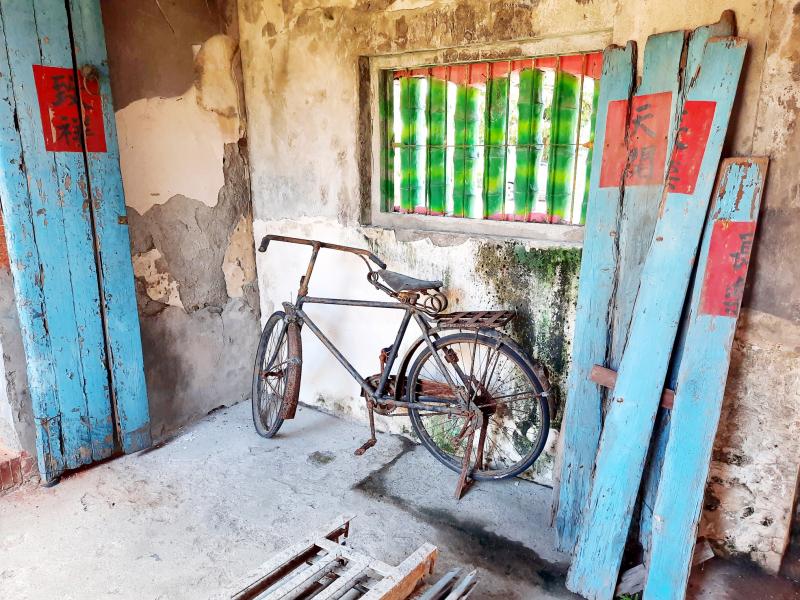
Photo: Steven Crook
However, if you don’t live there, Pingtung’s relative lack of development has its upsides.
The roads are seldom jammed, and many villages retain a traditional appearance. Certain customs are better preserved here than elsewhere. In private households and in ancestral temples shared with kinsfolk, Pingtung families continue to honor lineages established in the 18th and 19th centuries, when Hakka and Holo settlers pushed out from the coast to the foothills.
Some of these shrines are open to the public, and one of the most alluring and authentic is a few hundred meters east of Provincial Highway 3 in Jiuru Township (九如).
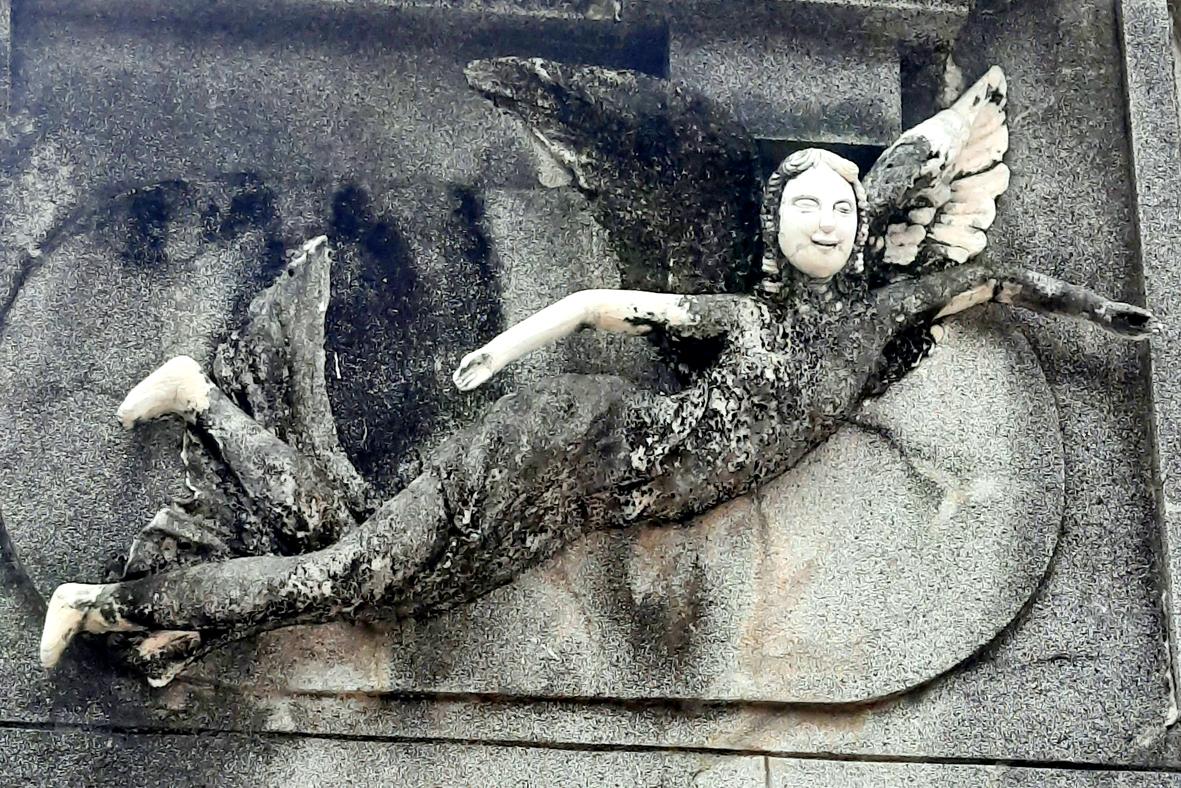
Photo: Steven Crook
The Gong Family Ancient House (龔家古厝) is within walking distance of Fanshe (番社) bus stop, which itself is linked to Pingtung Bus Terminal (next to Pingtung’s TRA station) by the #8216, #8217, #8218 and #8220 services. Finding the house isn’t especially easy, but if you ask for directions, you’ll get there without too much trouble.
There are no set opening days or hours. The front gate is usually unlocked during daylight.
The house has served as a venue for cultural events, and one wing bears a sign for the Pingtung County Holo Culture and Art Association (屏東縣閩南文化藝術協會). There was no exhibition at the time of my visit, but a lady in her sixties, there to offer incense at the shrine in the central chamber of the back building, graciously encouraged me to look around and take as many photos as I wished.
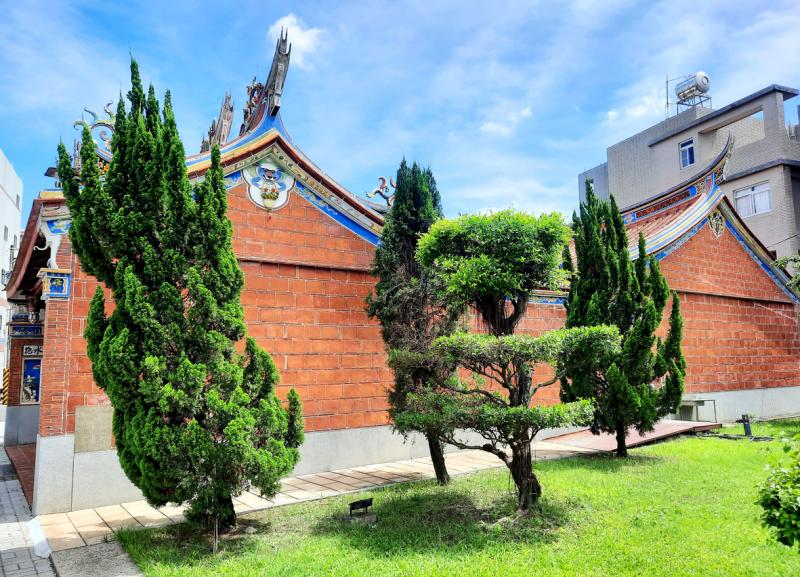
Photo: Steven Crook
Construction of the Gong Family Ancient House began circa 1912. Since then, the lady told me, it’s been repaired several times due to typhoon and earthquake damage. No conventional cement was used in its construction. Instead, the stone walls incorporate lime mortar.
In my opinion, the present condition of this gorgeous edifice hits a sweet-spot: The antiquity is obvious, but the deterioration isn’t yet depressing. The various decorations and motifs (which include cranes, dragons and phoenixes) retain much of their original clarity.
Most of the complex’s 30 rooms are kept locked. Even so, a connoisseur of art and architecture could happily spend an hour here.
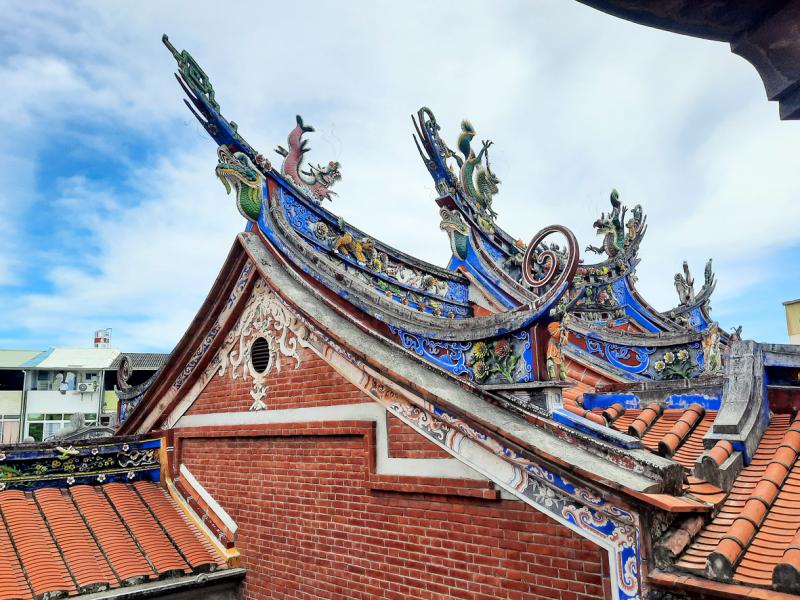
Photo: Steven Crook
Twenty minutes’ drive south of the Gong Family Ancient House, in the northern part of Pingtung City, the Chonglan Hsiao Family Shrine (崇蘭蕭氏家廟) is the beautiful legacy of an influential local family.
The Hsiao (蕭) clan of Chonglan migrated from China’s Guangdong province, arriving in Taiwan around 1740. There’s no apparent connection between them and a family with the same surname who left their mark on Pingtung County’s Jiadong Township (佳冬) — see “The town of mansions and ruins” in the Jan. 18, 2019 edition of this newspaper.
Like the Gong family in Jiuru, the Hsiaos of Chonglan prospered thanks to their involvement in the sugar trade prior to the 1895-1945 period of Japanese colonial rule, and by reinvesting the profits in productive farmland. Nine members of the extended family (all males, of course) were lauded for success in Qing Dynasty-era imperial civil service examinations.
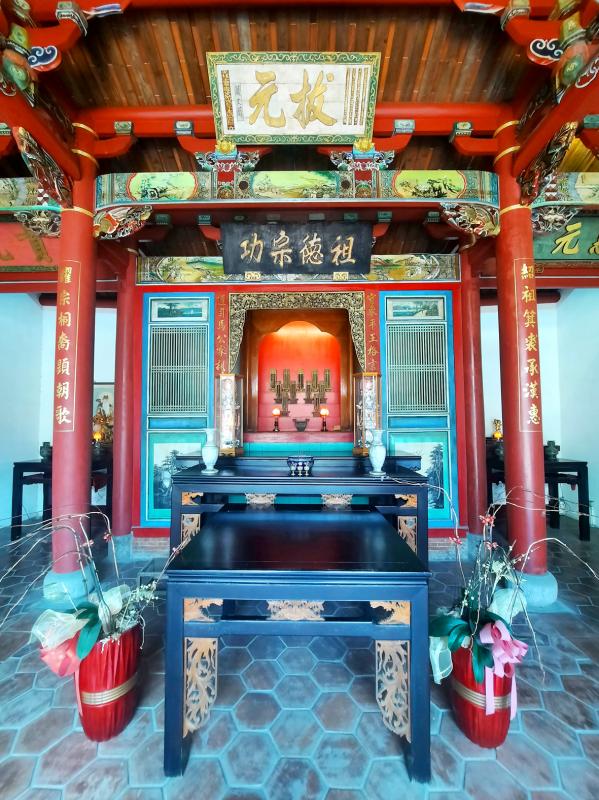
Photo: Steven Crook
The Chonglan Hsiao Family Shrine was founded in 1878. When it was dismantled and rebuilt in 1927, one of the craftsmen hired to decorate it was Chen Yu-feng (陳玉峰, 1900-1964), a leading temple artist of the 20th century.
The shrine is open from 9am to 5pm every day of the week, and there’s no admission charge. Parking a car nearby isn’t easy. Look for a spot on Boai Road (博愛路) and expect to walk a bit. Alternatively, catch a #513 bus from Pingtung Bus Terminal to Eco Park (環保公園), about 100m from the Hsiao shrine.
There’s no need to take a bus to Tseng’s Ancestral Hall (宗聖公祠), as it’s just 700m from Pingtung TRA Station, south of the elevated tracks.
Considering its special features — and the money the authorities spent on requisitioning and restoring it (NT$27 million from Pingtung County Government, followed by NT$72 million from the predecessor of the Ministry of Culture) — this 95-year-old landmark deserves to have more visitors than it seems to get.
The shrine honors members of a Hakka clan surnamed Tseng (曾). It’s open Tuesday to Sunday, from 9am to midday and 1:30pm to 5pm. Admission is free.
Inside the hall, I was fortunate to meet a volunteer who pointed out several details I might otherwise have missed. Some of the columns bear calligraphy in a style I’d never seen before; it’s said to have been inspired by the shape of bamboo leaves. The second-floor pavilions were designed to echo. Atop each pavilion, there’s a jaunty statuette.
You’d have to be blind to miss the lions atop the entrance gate. But not everyone notices the angles just below them.
From Tseng’s Ancestral Hall, it’s a short walk to two private residences owned by another notable local family.
The unoccupied and rapidly decaying building at 122 Siyou Road (自由路) was where Sylvia Lee Shu-teh (李淑德) spent part of her childhood and adult life.
Born in 1929, Lee is a US-educated violinist who spent decades nurturing talented musicians. For this reason, she’s been called “Taiwan’s godmother of the violin.”
The plot on which this 1930s house stands is so overgrown it’s now almost impossible to see the actual building. In addition to weather and neglect, it has reportedly suffered from pillaging.
On the other side of Renai Road (仁愛路), at 121 Siyou Road, Lee’s relatives built the grand yet forbidding three-story Dingchanghao Lee Abode (鼎昌號李宅). The surrounding wall is high and topped by barbed wire. The courtyard covers at least four times as much land as the house.
Completed some time between 1924 and 1932, it reflects Western architectural styles then popular in Taiwan and Japan. There’s talk of using government subsidies to repurpose it as a cultural/creative industries base — but last week, when I walked around the property’s perimeter, looking for good camera angles, I saw no evidence of that.
If there is a plan, it may be on hold until after November’s local elections. Returning to my car, I looked back toward the house and noticed a huge campaign banner on the wall that separates the property from Siyou Road. It promotes the candidature of a man who hopes to become Pingtung City’s next mayor.
His surname, of course, is Lee.

Feb. 17 to Feb. 23 “Japanese city is bombed,” screamed the banner in bold capital letters spanning the front page of the US daily New Castle News on Feb. 24, 1938. This was big news across the globe, as Japan had not been bombarded since Western forces attacked Shimonoseki in 1864. “Numerous Japanese citizens were killed and injured today when eight Chinese planes bombed Taihoku, capital of Formosa, and other nearby cities in the first Chinese air raid anywhere in the Japanese empire,” the subhead clarified. The target was the Matsuyama Airfield (today’s Songshan Airport in Taipei), which

China has begun recruiting for a planetary defense force after risk assessments determined that an asteroid could conceivably hit Earth in 2032. Job ads posted online by China’s State Administration of Science, Technology and Industry for National Defence (SASTIND) this week, sought young loyal graduates focused on aerospace engineering, international cooperation and asteroid detection. The recruitment drive comes amid increasing focus on an asteroid with a low — but growing — likelihood of hitting earth in seven years. The 2024 YR4 asteroid is at the top of the European and US space agencies’ risk lists, and last week analysts increased their probability

On Jan. 17, Beijing announced that it would allow residents of Shanghai and Fujian Province to visit Taiwan. The two sides are still working out the details. President William Lai (賴清德) has been promoting cross-strait tourism, perhaps to soften the People’s Republic of China’s (PRC) attitudes, perhaps as a sop to international and local opinion leaders. Likely the latter, since many observers understand that the twin drivers of cross-strait tourism — the belief that Chinese tourists will bring money into Taiwan, and the belief that tourism will create better relations — are both false. CHINESE TOURISM PIPE DREAM Back in July

Could Taiwan’s democracy be at risk? There is a lot of apocalyptic commentary right now suggesting that this is the case, but it is always a conspiracy by the other guys — our side is firmly on the side of protecting democracy and always has been, unlike them! The situation is nowhere near that bleak — yet. The concern is that the power struggle between the opposition Chinese Nationalist Party (KMT) and their now effectively pan-blue allies the Taiwan People’s Party (TPP) and the ruling Democratic Progressive Party (DPP) intensifies to the point where democratic functions start to break down. Both